Yachting Monthly
- Digital edition
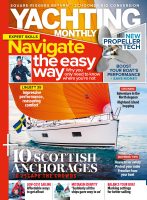

First look: Beneteau First 36
- Toby Heppell
- September 28, 2022
The new Beneteau First 36 is a new sub-40ft sporty racer/ cruiser from the French yard, which really embraces the 'First' legacy
Product Overview
Although not officially launched at the Cannes Yachting Festival, this was the first time we had been able to step aboard the new Beneteau First 36.
Launches in the sub-40ft market have become a rare thing in recent years, so we were excited to get a look round this little performance yacht. It should be said this feels like a ‘First’ boat of old in that it doesn’t take much looking around to realise that this is designed as a true cruiser/racer.
This racy concept is built into the boat’s DNA, coming from the pen of Sam Manuard, a designer most recently known for designing the radical, semi-scow bowed IMOCA 60, L’Occitane en Provence for the last Vendée Globe (now sailed by Louis Burton as Bureau Valee ).
It’s also worth mentioning this is not a ‘pure’ Beneteau in that she was already under development by Seascape Marine when Groupe Beneteau took a controlling share of the yard. Perhaps this accounts for the slightly more uncompromising racer features that exist on her.
Below she feels every bit the ‘First’ boats of old. The space is comfortable and light but there is minimal wood and it feels more of a practical space than one designed with outright comfort when at anchor in mind. She’s offered with 3 cabins, one in the forepeak and two aft cabins to port and starboard. The latter have been designed to be easily converted to sail or other storage, with one half of the bed removable to create a working storage area.
On deck the performance feel remains, although with wheels instead of a tiller, there are some concessions to cruisers – racers would tend to opt for a tiller on something this size.
She could absolutely make an excellent performance coastal cruiser and if getting from a to b in a smaller yacht is what you’re after, you’d be hard pushed to do much better than this, but we fully expect to see plenty of these IRC racing too.
Beneteau First 36 specifications
LOA: 11.0m 36ft 1in Beam: 3.8m 12ft 6in Draught: 2.25m 7ft 5in Displacement: 4,800kg 10,580lb Ballast: 1,550kg 3,420lb Upwind sail area: 80m2 860sq ft Downwind sail area: 180m2 1,930sq ft Displacement: 4,800kg Base price: €198,000 ex VAT Builder: www.beneteau.com
Enjoyed reading this?
A subscription to Yachting Monthly magazine costs around 40% less than the cover price .
Print and digital editions are available through Magazines Direct – where you can also find the latest deals .
YM is packed with information to help you get the most from your time on the water.
- Take your seamanship to the next level with tips, advice and skills from our experts
- Impartial in-depth reviews of the latest yachts and equipment
- Cruising guides to help you reach those dream destinations
Follow us on Facebook , Twitter and Instagram.
Yachting World
- Digital Edition
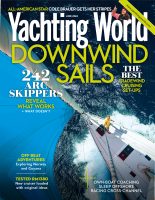
First look: Beneteau First 36 – Sam Manuard designed performer
- Rupert Holmes
- November 15, 2021
The all new Beneteau First 36 represents something of a back-to-the-future moment for the French marque with IMOCA60 designer, Sam Manuard providing a sporty little performer.

This Sam Manuard design is arguably one of Beneteau’s most important new models for years. The company’s First range used to dominate the performance cruiser/racer market. These were fast, yet well mannered, boats that offered surprisingly civilised accommodation and the Beneteau First 36 is the first we have seen of this style boat from Beneteau in some years.
The past decade has seen the design of raceboats and cruisers diverging across the board and Beneteau focussed on the needs of cruisers who demanded ever more accommodation volume and home comforts.
Nevertheless smaller French yards, such as Pogo and RM Yachts , have demonstrated a latent demand for cruisers with a very high level of performance. Beneteau’s return to the 30-40ft sector with the first new First model in this size range for almost a decade and a half has therefore been welcomed by many.

The ‘Race’ model of the Beneteau First 36
However, this boat was not conceived in France – it was already being developed by Seascape when the Slovenian company partnered with Beneteau in 2018.
Sparkling performance?
Three key aims informed the development of the concept: sparkling all-round performance, accommodation to equal the extremely successful First 40.7 , and a long production life.
At the same time, mass appeal was a key factor that informed the design. The priorities of both Beneteau and the Slovenian team are closely aligned in this respect. “We try to change the mainstream of sailing,” Seascape founder Andraz Mihelin told me. “We don’t want to just serve niche sailing enthusiasts and with this boat we want to set the bar higher for everyone.”
Taking performance first, the boat is intended as a fast cruiser and club racer, so all-round ability is important. “That means the boat has to be quick on (upwind and running) VMG courses, otherwise you suffer in 50 per cent of the time,” Mihelin says.
Yet early planing is still a key part of the attraction – the Beneteau First 36 is designed to achieve 10 knots of boat speed in only 12-13 knots of true wind. To achieve this it’s essential to keep displacement within the designer’s figures. Yet legions of boat builders in the past have failed to achieve this, with the result that plenty of promising designs have failed to deliver.
How can we be sure this boat will not meet the same fate? “The difference lies in how well the boat is engineered and built,” says Mihelin. “We’ve put 70 per cent of our effort into that quarter – the stuff that you never see because it’s hidden.”
Pure Design and Engineering, the New Zealand company headed by legendary structural engineer Giovanni Belgrano, was tasked with this aspect of the project. Mihelin says having confidence in precise specifications and scantlings for every element of the build has been key to keeping weight to a minimum, while ensuring strength and stiffness are not compromised.
Article continues below…

First look: Sunbeam 32.1
The Sunbeam 32.1 is the first model developed under the new ownership of this 70-year-old Austrian yard is the result…

First look: X43 – second generation
Mark 2 versions of a good yacht are often a lot better than the original, with many small changes that…
This applies as much to smaller components as to the main structure. All bulkheads and furniture are made of infused foam sandwich panels, just as they would be for a raceboat, even the bathing platform gets this treatment – it’s made of Nomex sandwich and weighs only 4.5kg.
However, the comfort factor hasn’t been forgotten on the Beneteau First 36 – there’s plenty of wood trim to give the saloon a comfortable and cosy appeal. And the wide beam and long waterline makes this a supremely spacious 36-footer by any standards, although headroom is not as generous as on most of today’s pure cruisers. The lack of chines in the topsides will be a surprise to many.

However, designer Sam Manuard says that, although they are a necessity for designs where maximum beam is limited (as is the case with Mini 650s, Class 40 s and IMOCA 60s ), when maximum beam isn’t constrained a hull without hard-edged chines has less drag.
Given the original launch of this model was delayed significantly after Seascape joined forces with Beneteau, I also asked Manuard whether he would have drawn a different shape if he was designing the boat today. “The design specification hasn’t changed,” he replied, “so there’s no advantage in changing the hull shape. The boat already has quite a lot of volume forward, but a scow bow would not be appropriate – we wanted a fast all-rounder, but not a design that would be extreme in any way.”
The First 36 will be built in a new facility in Slovenia. Only 25 boats are scheduled for delivery in the first 12 months of production, but output is expected to ramp up significantly after that.
Initially it will only be available with twin wheels, which seems a shame. They are an unnecessary complication on a boat like this, while tillers take up less space and facilitate short-handed sailing.
The world premiere will be at the Dusseldorf boat show in January 2022.
Beneteau First 36 specifications
LOA: 11.0m 36ft 1in Beam: 3.8m 12ft 6in Draught: 2.25m 7ft 5in Displacement: 4,800kg 10,580lb Ballast: 1,550kg 3,420lb Upwind sail area: 80m2 860sq ft Downwind sail area: 180m2 1,930sq ft Displacement: 4,800kg Base price: €198,000 ex VAT Builder: www.beneteau.com
If you enjoyed this….
Yachting World is the world’s leading magazine for bluewater cruisers and offshore sailors. Every month we have inspirational adventures and practical features to help you realise your sailing dreams. Build your knowledge with a subscription delivered to your door. See our latest offers and save at least 30% off the cover price.

Modern Hull and Largest Living Space: the New Beneteau First 36 Revealed

Three years ago, Beneteau and Seascape joined forces to co-develop the new generation of First. After launching the sport-cruiser part of the range: First 14, First 24, and First 27, they unveil today the first photos of this first racer-cruiser – the brand new First 36. The Beneteau First 36 has a mission to bridge the gap between high-tech development in the world of racing and mainstream racer-cruisers. To be specific, even the standard version of First 36 fully planes in a moderate breeze.

The desing team
The design team of the new Beneteau First 36 is coordinated by the experienced hand of Kristian Hajnšek, CTO of Seascape , who works closely with the team at French yard Beneteau to bring race-grade construction technologies into the segment of production racer-cruisers.
Naval architect : Samuel Manuard
He is currently the hottest name in offshore racing, where his designs are winning Mini, Class 40, and IMOCA 60 classes. He is also the designer of the new First and First SE from 14ft to 27ft.
Structural engineering : Pure Design & Engineering

The team from New Zealand was in charge of engineering at some of the most extreme projects in the world of extreme sailing: TP52s, AC75, AC72, IMOCA 60s, and Club Swan, as well as high-end production yachts.
Design : Lorenzo Argento
Beneteau First 36 follows the same design language of her larger sister – First Yacht 53 – building on the timeless aesthetic of Lorenzo’s work, most notably seen on the Wally and Brenta yachts.
Innovation and research : Gigodesign
This industrial design studio’s design research and innovation insights with multiple Red Dot awards were essential in locking in and developing innovation opportunities.

The design team is coordinated by the experienced hand of Kristian Hajnšek, CTO of Seascape, who works closely with the team at Beneteau to bring modern construction technologies into the segment of accessible production racer-cruisers.
Beneteau First 36 follows the design language of the 7th generation of First set by Lorenzo Argento as a subtle and super-efficient boat. Thanks to its wide modern hull, the largest living space in its class will offer comfort comparable to the successful Beneteau First 40.7, with plenty of smart solutions to make living onboard a great experience.

Sailing functionality
Positioning six winches, steering wheels, and other deck gear was thoroughly tested on several mock-ups and a full-scale testbed sailboat to enable the sailing experience promised on the previous page. Details like an offshore hatch on the foredeck or removable cockpit benches show the priority of sailing functionality over style used throughout the design process.
Standard aluminum rig and cast iron keel of the new Beneteau First 36 were chosen to keep the boat accessible. Yet, Sam Manuard brought his experience and focused on perfecting the shape and design of these two key ingredients for a great sailing experience. The draft of 2,25 m was chosen as a compromise between performance and ease of use.

Racing Layout
In the racing layout, the wide and modern cockpit allows for different helm and trim positions, either for short-handed or fully-crewed sailing. In this setup, the table and bench extensions are removed, opening the working area in the cockpit.
A higher-than-average steering wheel position leaves enough room for the helmsman to move forward towards the mainsail winch when sailing shorthanded. The cockpit winches’ positioning allows one or two crew members to sail with legs in and work the mainsail or primary winches in full crew mode. It also allows cross-sheeting of all sheets to the windward side. Harken , Ronstan, Spinlock and Antal deck gear were combined for performance.

Cruising layout
When you remove your racing gear and take your family cruising or daysailing , the cockpit benches with cushions increase the seating area and add storage space and rope organization. The cockpit table is big enough to seat a crew of six. Additionally, the design team developed an ultralight bathing platform to give sailors easy access to the water without affecting the boat’s performance.
The interiors
Simple, comfortable and multi-purpose, the First 36 interior was developed around three-cabin cruising functionality. Its most notable feature is the large central fridge (with a removable cutting board), making this sailboat’s galley the largest of her class. A corridor created together with the foldable and removable table helps sailors move around the saloon safely and offers stacking possibilities.

Going against the trend, the Beneteau First 36 features a full-sized navigation table. While vital to navigation, it is also a suitable home office. Two portlights in every room allow airflow and natural light, while sectional indirect lighting with a red racing option illuminates the boat at night. Three cabins with easily accessible full-sized double berths and innovative heads round up the features of this bright and spacious interior.
Beneteau First 36 Specs
Beneteau first 36 review.
An interesting cruiser-racer with a wide modern hull and large living spaces
Mishi 88, The Bluewater Composite Carbon Superyacht from Turkey
Ice yachts unveils the advanced and sleek ice62, the new crossover clubswan 43 has been launched, iconic j class hanuman arrives at holterman shipyard for refit, live your passion, subscribe to our mailing list.

Beneteau First 36
Beneteau’s latest midsize racer-cruiser gets the mix right.
The Beneteau First series has a long history and proud pedigree. Launched in the late 1970s, Beneteau First designs have collected wins all over the globe. Over time, the design ethos wavered a bit, but the First series is back. This latest series started with the First 53, followed by several very hot sports boats. The First 36 shows what can happen when you combine a targeted, clean sheet-of-paper-design ethos, a globe-spanning dream team, and the resources of a world-renowned builder.
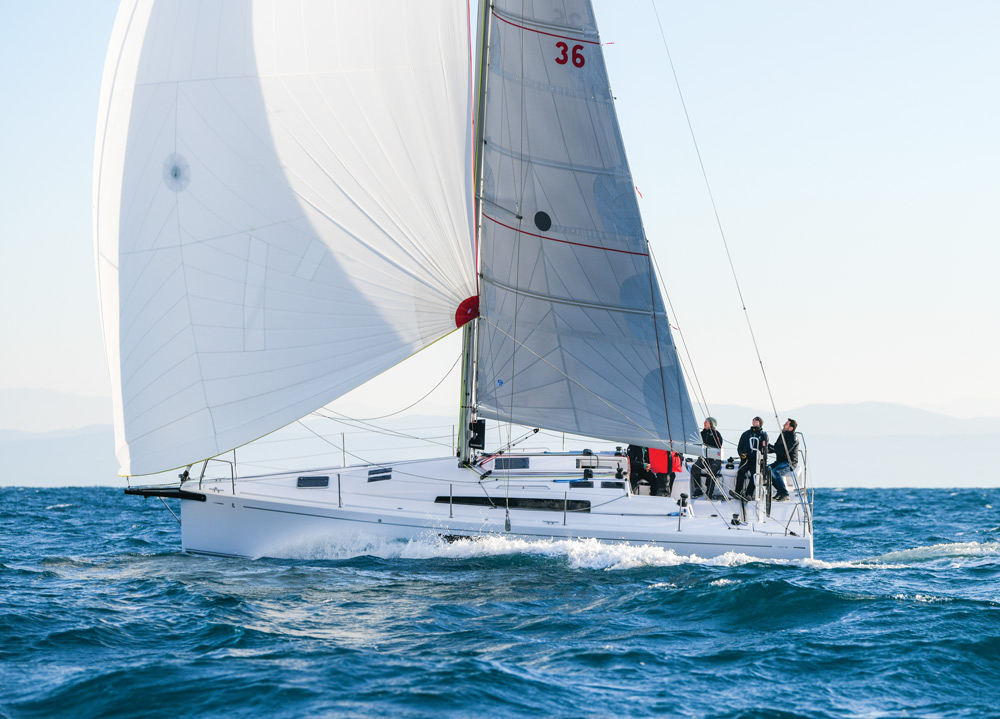
To meet this seemingly impossible design goal, Beneteau assembled a dream team. The team’s core was Seascape, the Slovenian company that Beneteau became the majority owner of in 2018. Seascape has produced some great boats and is responsible for Beneteau’s newest First sport boats, the First 14, 24 and 27. Seascape had a long history with naval architect Sam Manuard, of IMOCA and Open 40 fame, who was on board for the 36. Sam and the Seascape team are skilled with composites, but to design the hull scantlings the company enlisted New Zealand company Pure Design and Engineering, which perform the same services for America’s Cup boats. Lorenzo Argento, coming off projects with Wally and Brenta Yachts, designed the interior and deck for First 53, and ensured design continuity with the 36. Wanting to get the 36 just right, Beneteau also engaged Sito, an innovative Slovenian industrial design firm, to make sure that the boat worked from a ergonomic perspective.
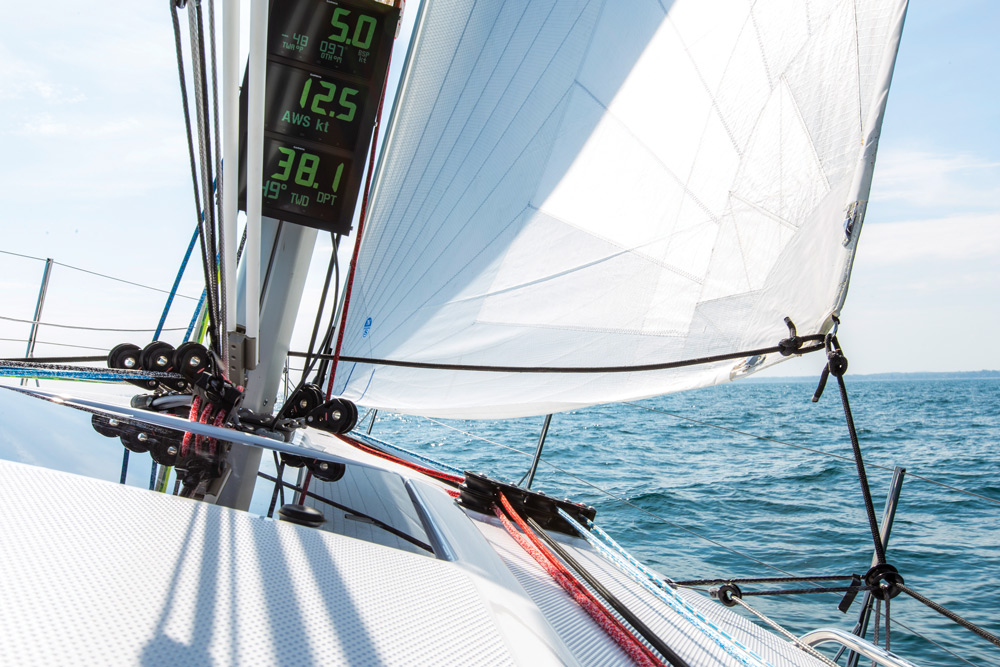
The cockpit of the First 36 does a great job balancing its two missions. The 12-foot 8-inch beam is carried well aft, making for a huge cockpit. The transom is open with twin composite wheels just forward. The forward end of the cockpit is convertible between racing and cruising. Long settees are perfect for stretching out with a book in cruising form. On the race course, the aft end of the settees is removed, allowing direct access to the primary winches. Our test boat didn’t have a cockpit table, but there is an option to include a rail-mounted table between the settees. The removable settee boxes offer a lot of storage, and there are lazarettes on the stern quarters and a large lazarette in the cockpit sole. There is a retractable swim step for easy dinghy boarding or swimming.
The cockpit is comfortable, and designed for sailing. There are six Harken winches—two on the cabintop for halyards and spinnaker sheets, two primaries and two mainsheet winches. The full-width traveler is set just forward on the helms, with a winch to outboard on each side.
The boat has an optional fiberglass sprit for the kite, and cleanly houses a proper anchor, complete with anchor locker and windlass. There is an optional Facnor FlatDeck jib furler on the stem. The furler is low profile to maximize the luff length and uses flat webbing as the furling line to eliminate overrides. There are no jib lead tracks on the deck, the sheet lead is controlled by Beneteau’s 3D Floating Point lead system. This friction ring can be adjusted up and down, in and out, allowing for a precise lead angle without leaving the cockpit.
The First 36 has an aluminum mast and boom, but a carbon fiber option is available.
Also in Boat Test
- Jeanneau Yachts 55
- Seductive simplicity
- X 4.3 Pure Performance
- Beneteau Oceanis 40.1
- Sun Odyssey 380
Also from Bob Pingel
- How do I keep my A-sail under control?
- The knots you need to know
- How do I replace leaking hatches?
- How do I stop my mast from leaking?
- How should I rig a preventer?
- Splicing Dyneema
- Tachometer troubles and lazy jack mounting questions
- Do I need to add running backstays?
- What’s with the sour smell on my boat?
- Why is there water in the bilge when I run the engine?

- CLASSIFIEDS
- NEWSLETTERS
- SUBMIT NEWS
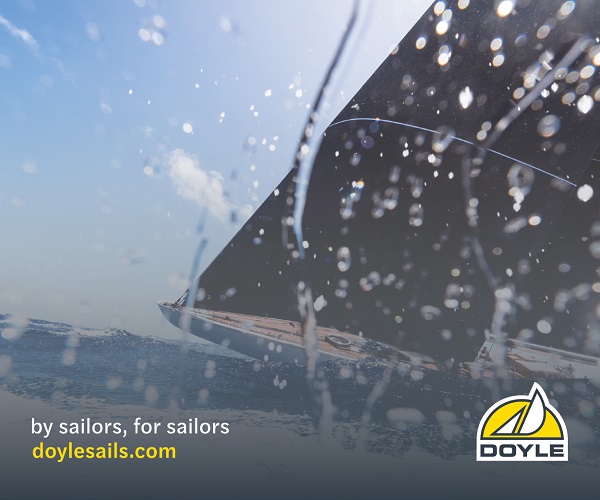
Beneteau First 36 - In the pursuit of the ultimate balance
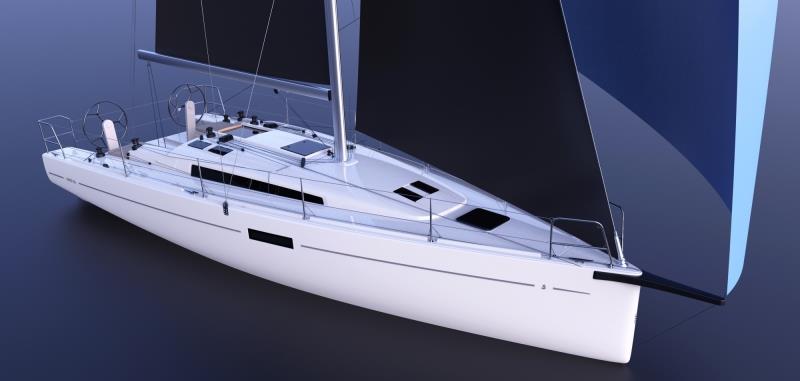
Related Articles
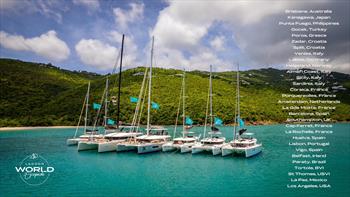
- Oceanis 30.1
- Oceanis 34.1
- Oceanis 37.1
- Oceanis 40.1
- Oceanis 46.1
- Oceanis 51.1
- Oceanis Yacht 54
- Oceanis Yacht 60
- FIGARO BENETEAU 3
- Heritage sailing yacht
- Flyer 6 SUNdeck
- FLYER 6 SPACEdeck
- Flyer 7 SUNdeck
- Flyer 7 SPACEdeck
- Flyer 8 SUNdeck
- Flyer 8 SPACEdeck
- Flyer 9 SUNdeck
- Flyer 9 SPACEdeck
- Antares 7 Fishing
- Antares 8 Fishing
- ANTARES 11 FLY
- Gran Turismo 32
- Gran Turismo 36
- Gran Turismo 41
- Gran Turismo 45
- Swift Trawler 35
- Swift trawler 41 Sedan
- Swift trawler 41 Fly
- Swift Trawler 48
- Grand Trawler 62
- Heritage motorboats
- A REMARKABLE ANNIVERSARY
- Architects and Designers
- Become a BENETEAU boat owner
- Tests and Awards

Speed made easy : BENETEAU FIRST 36
Welcome to the latest model in our new breed of high-performance cruiser-racers.
With a weight of 4,8 tons and an upwind sail area of 80 square meters, the new First 36 simply presents a different sailing experience.
Actually, we believe this is the first time a mainstream-production boat with full-cruising facilities, a mid-market price tag and the full support of a worldwide dealer network has been pushed this far towards true high-performance sailing.
But what we are really proud of is making this level of fast, fun sailing available to everyone. Because First 36 has made speed easy, we believe you will simply sail more.
The DIFFERENce
The main difference from most of the other boats labelled as cruiser-racer is this: In a First 36 you are no longer locked in displacement speed.
The main reason for this is its significantly lower weight. Going 9, 10 or 11 knots instead of 5, 6 or 7 knots makes sailing more fun. It also makes your cruising radius bigger. You will not only enjoy sailing more with this boat. You will also spend more time under sail.
The sailing experience
The mission of the team behind the First 36 was to take the drama out of going fast. The sail plan, underwater body and steering system are balanced so well that the boat can be pushed really hard without wiping out or even developing excessive weather helm. You can steer a First 36 with fingertip control on a hard upwind as well as a fast, planning ride downhill.
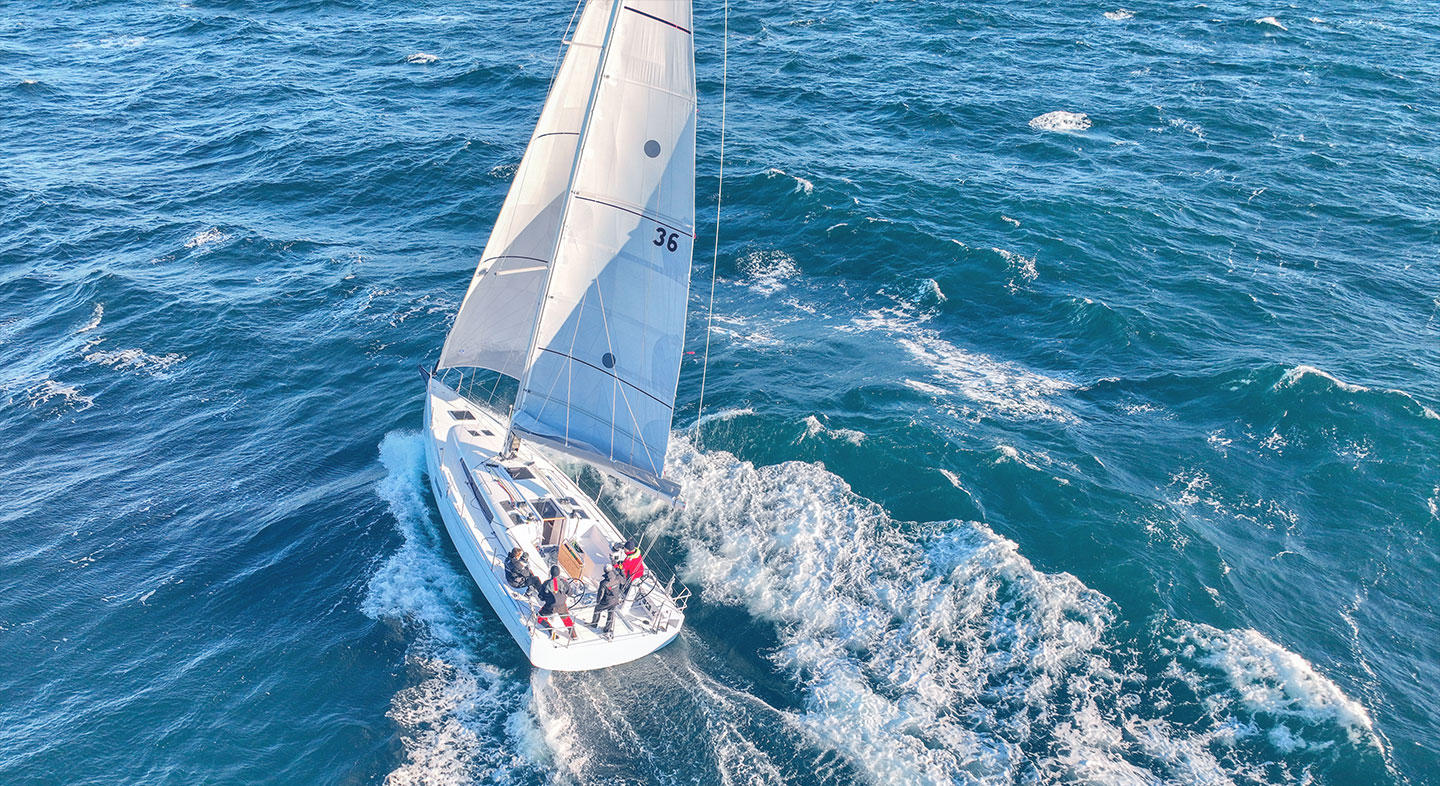
how it was done
The all-around speed, seaworthiness,and stability of First 36 has trickled down from modern offshore racers. Our naval architect, Sam Manuard, works at the front end of this development.
Then, the design was given to PURE Design & Engineering, a team famous for making structural calculations for America’s Cup boats, IMOCAs and TP-52s—in other words, the fastest and most abused racing boats in the world.
This was iterated in endless cycles through the design process where Lorenzo Argento and Gigodesign, together with teams from Beneteau and Seascape, shaped the project into the new First 36.
The entire boat is a vacuum-infused, fully-cored GRP composite structure—including bulkheads and most interior parts. Almost all interior elements contribute to the structural strength of the boat.
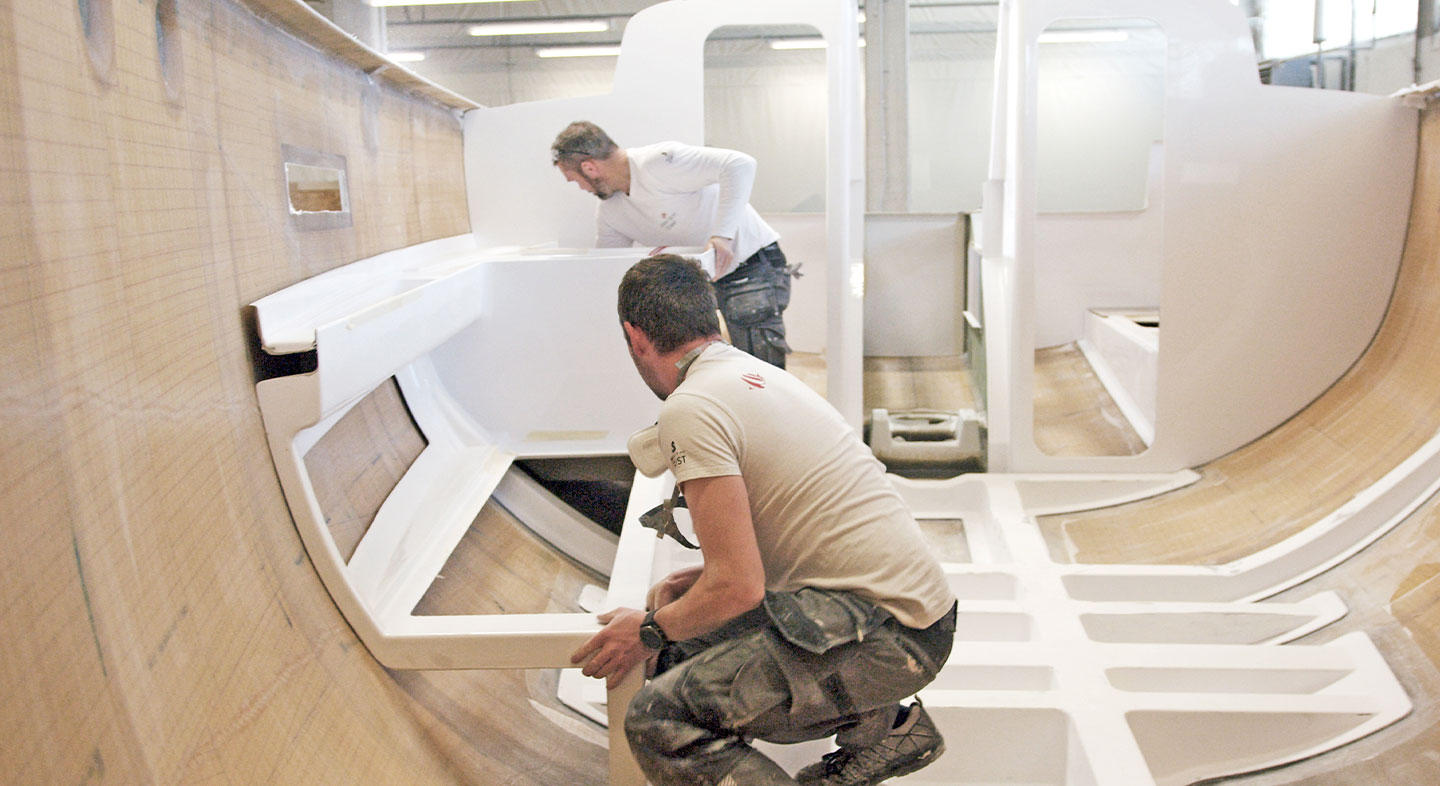
Variety of sailing styles
First 36 is designed to fit a variety of sailing styles: cruising with family and friends, shorthanded sailing, club racing or distance racing with a full crew.
To facilitate all of this, the cockpit has two distinct modes: one for racing/shorthanded sailing and one for cruising.
In racing mode, the open T-cockpit has space enough to move effortlessly between ergonomic work positions.
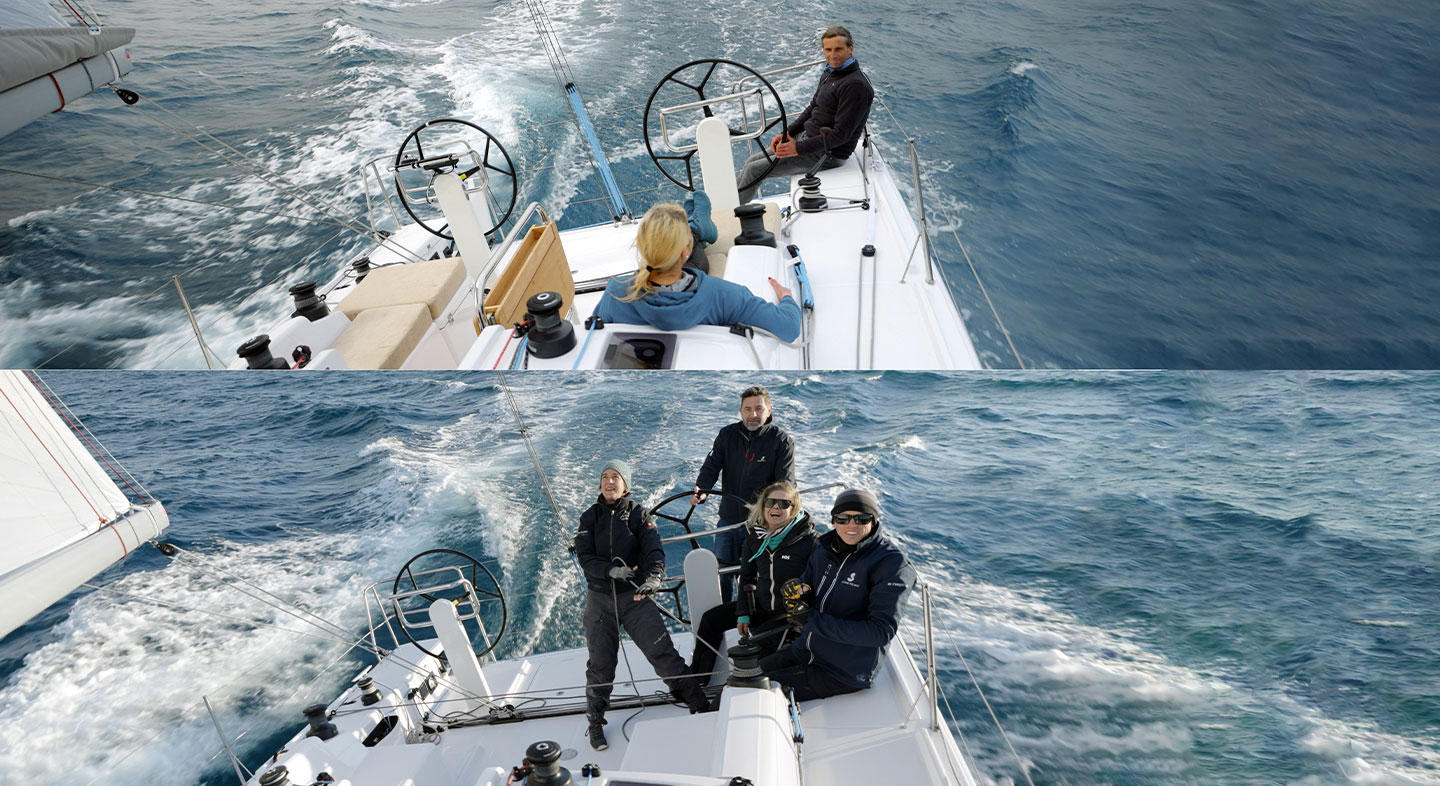
In cruising mode, the cockpit is supplied with removable boxes to lengthen the benches—and a cockpit table. This transforms the cockpit to a more lounge-like, relaxing environment.
Deck gear is upgraded from industry standard, both in size and quality.
more than just 36 feet
The living quarters below deck are a reinvented layout of the legendary First 40,7. Their huge volume comes as a natural consequence of the modern, performance-optimized lines of the hull.
Even though most of the interior is structural elements in vacuum-infused GRP, warm wood has been used for floorboards, doors, table and trim. A smooth inner liner and ambient light settings create an atmosphere where you will feel at home and relaxed before and after sailing.
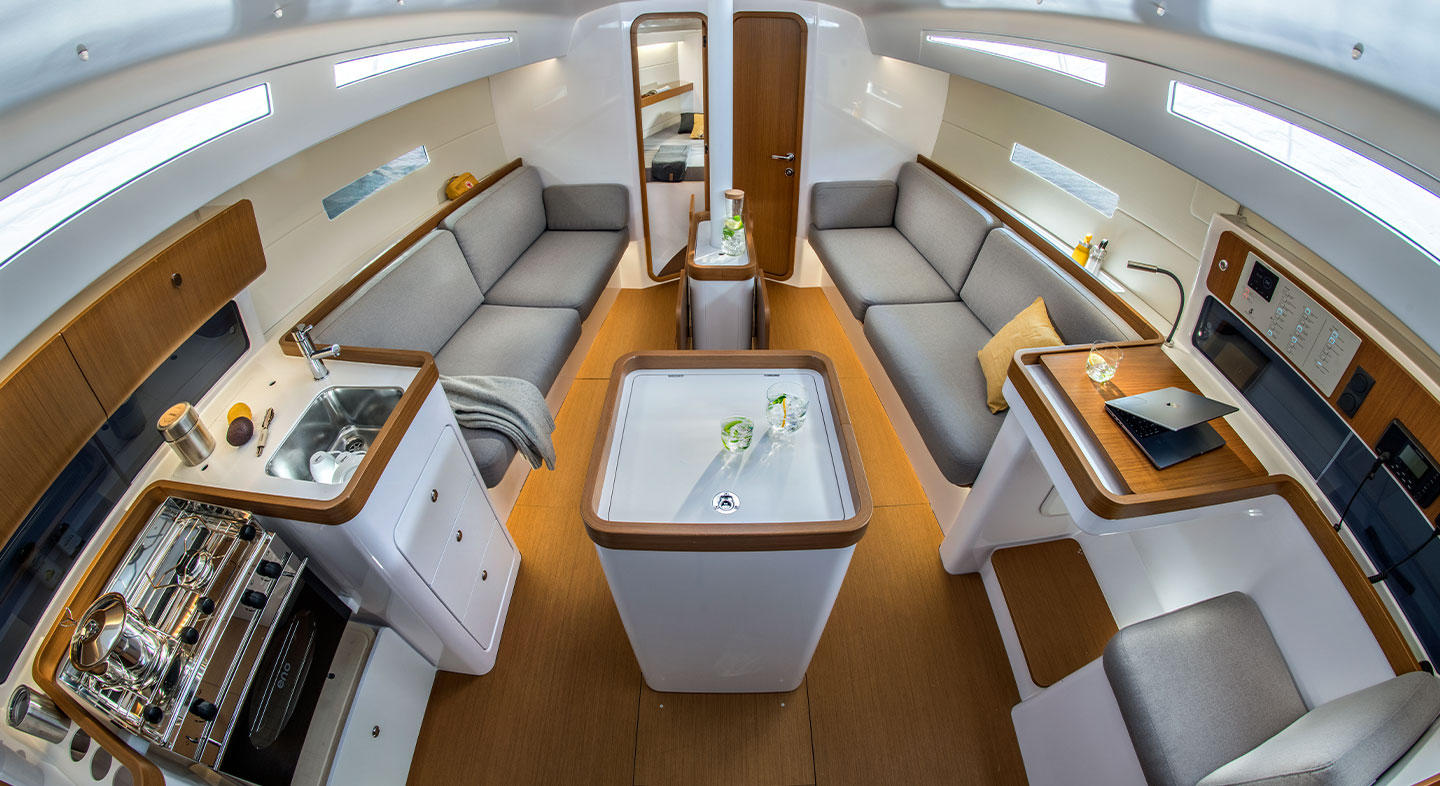
A freestanding kitchen island contains a huge fridge, connected to the pantry with a removable cutting board. The bathroom footprint is significantly reduced, due to a foldable sink. The two multi-purpose aft cabins can sleep two people comfortably. They can also be transformed into huge storage rooms when needed—big enough for a surfboard.
more information about the First 36
Published on 01.04.2022
- Sailing yacht
Select your area and your language
- Chinese, Simplified

- BOAT SHOWS , Boot Dusseldorf , News , Press releases , SAILBOATS
Beneteau First 36, pure racer-cruiser harmony
- Andrea G. Cammarata
- November 19, 2021
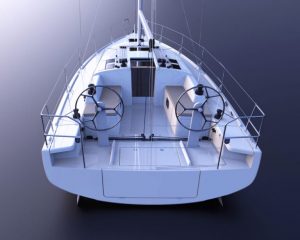
The First 36 is a promising racer-cruiser that is finally preparing to fill the gap created by the announcement two years ago of the first First Yacht 53 : an excellent cruiser but not really suited to racing.
The First 36, on the other hand, is designed to win and get on plane in moderate winds, even in her standard version, while promising the comfort needed for family cruisers at the same time.
First 36: the racer-cruiser of the First range
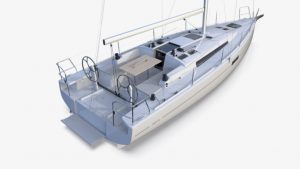
11 meters long and 3.80 meters wide , First 36 was certainly designed for the new generation of sailors and amateurs who want to enjoy their summer cruises but don’t hesitate to take part in winter competitions, we repeat, to win them.
The First 36 is, fact, offered in two layouts: Racing and Cruising.
Regardless of the configuration, the First 36’s waterlines are optimized for use in both directions. A very wide sail plan and a well-balanced design contribute to this, to satisfy the great demands of both club racers and the less ambitious.
The sleeping zone below deck consists of three cabins, two aft and one forward, all with two portholes providing natural lighting and air flow. The dinette i s designed with a classic layout, with the large chart table to the right. The galley is located to the left, with a central fridge in the hallway that doubles as a worktop or chopping board.
In terms of interior space, the First 36, although smaller in size, is, to our surprise, equal to the legendary First 40.7 and does so thanks to its exceptionally spacious hull.
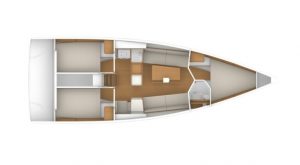
The synthesis of the nautical project is impressive and ensures pleasant family cruises, offering a boat that is suitable for having fun in total safety.
Racing Mode
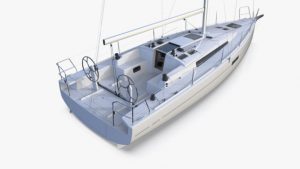
The exact positioning of the six winches and the two very forward wheels at the stern are the result of numerous tests carried out to offer a sailing experience at the highest level when sailing as a duo or with the entire crew.
The First 36 is a lightweight craft in her own right. She is no more than 4,800kg in displacement and is well designed to beat the competition. Her steel keel and 2.25-meter draft represent a careful choice of “ compromise between performance and ease of use “, especially if we think of the frequent shallow waters of Mediterranean ports.
First 36 is the brainchild of Sam Manuard , the nautical architect known for the designs of many Minis, Class 40s and IMOCA 60s. Mr.Manuard, with Beneteau, also designed the First SE in the 14 to 27 foot range.
As for the structural engineering, this is by Pure Design & Engineering , the New Zealand team that designs many racing boats and even some top-level yachts. The design of the First 36 is instead by Lorenzo Argento, whose pencil had already sketched the First Yacht 53 in 2019.
Technical Specs
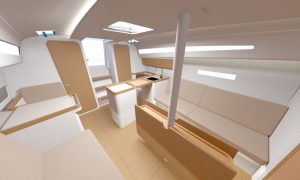
Leave a Reply Cancel reply
Your email address will not be published. Required fields are marked *
Save my name, email, and website in this browser for the next time I comment.
Language switcher
Browse categories.

You might be interested in
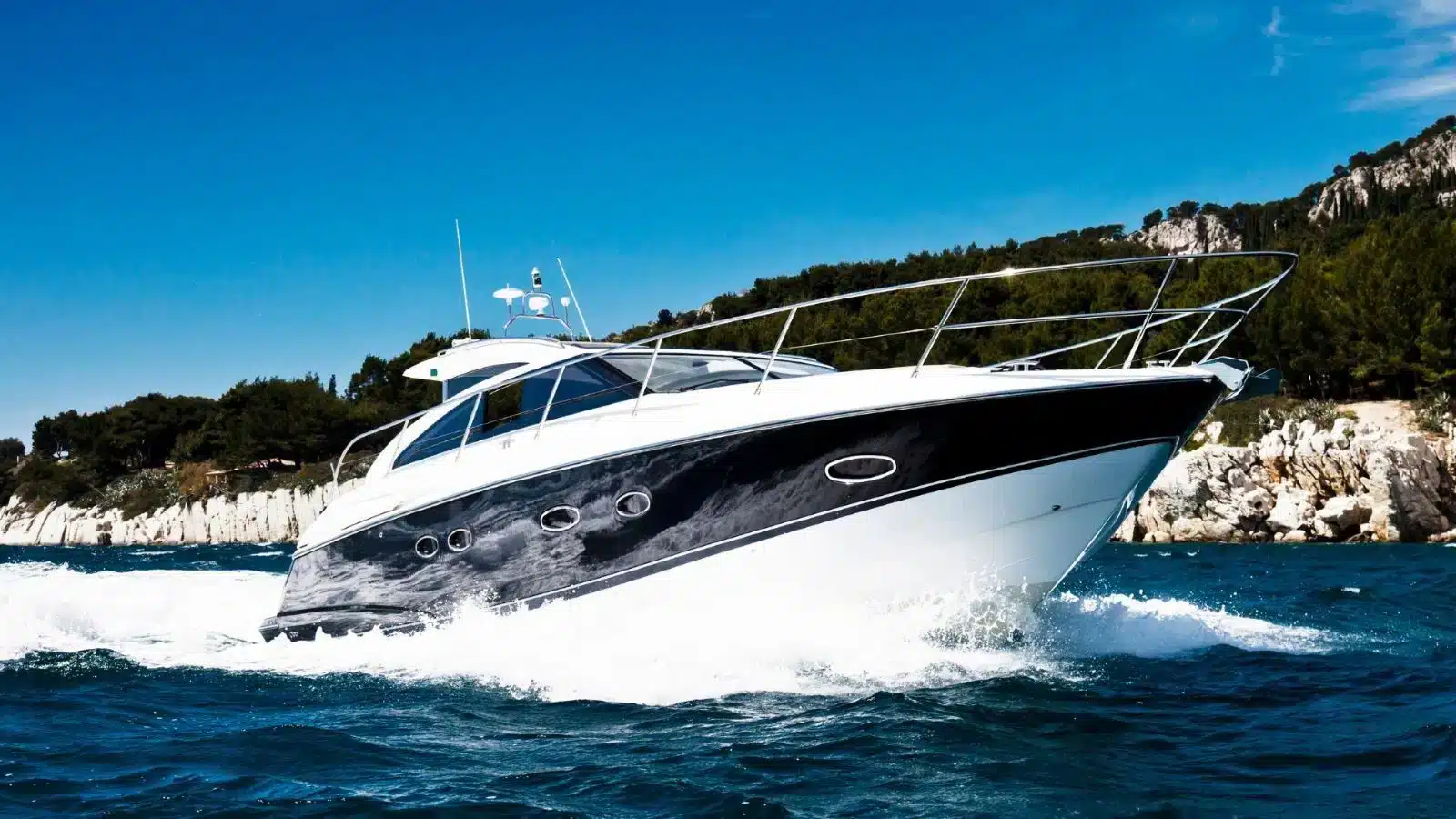
Antifouling for boats: everything you need to know
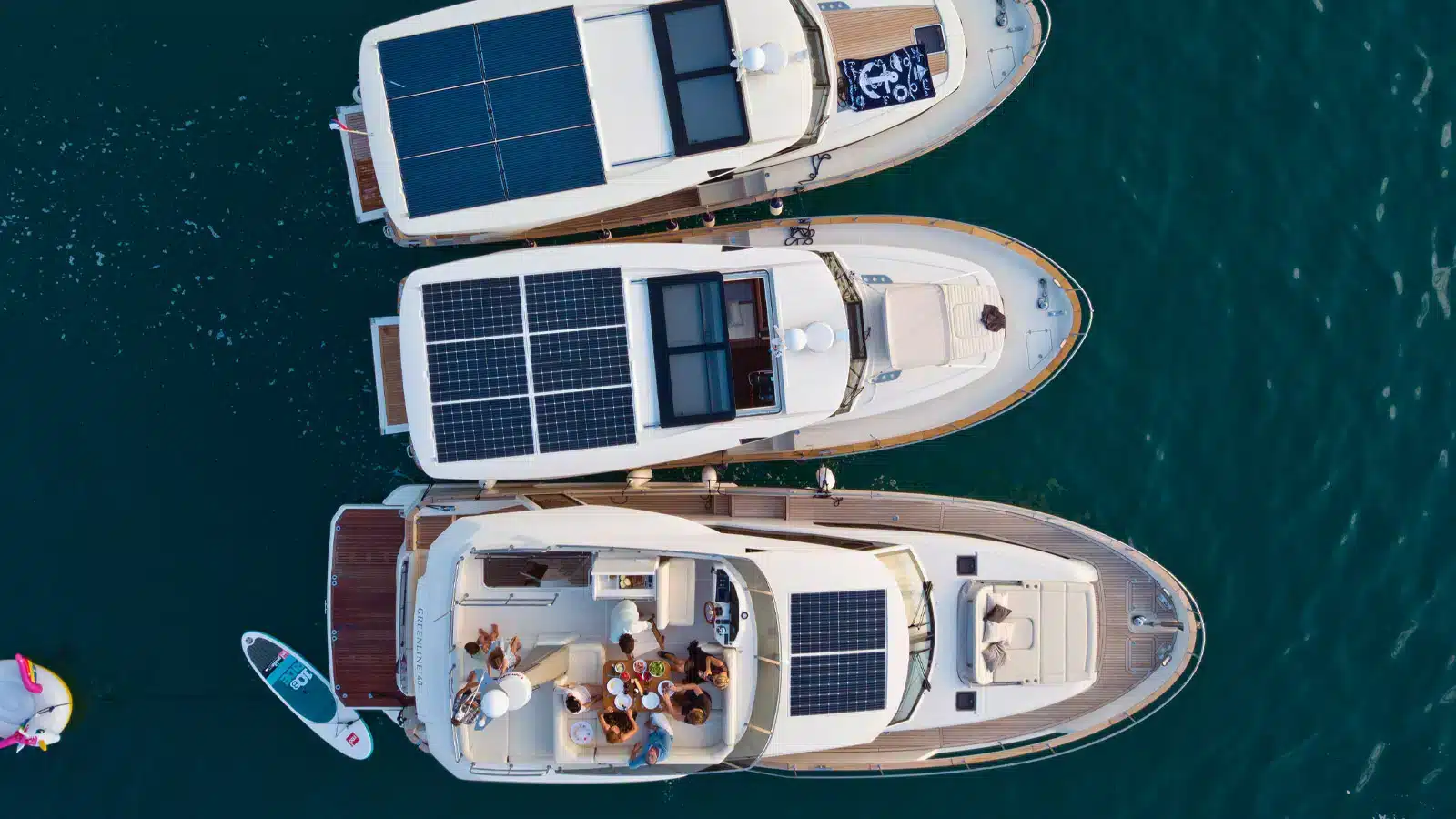
Greenline surpasses 1000 eco-friendly boats sold

Razeto e Casareto and Design: the story of a centuries-old love
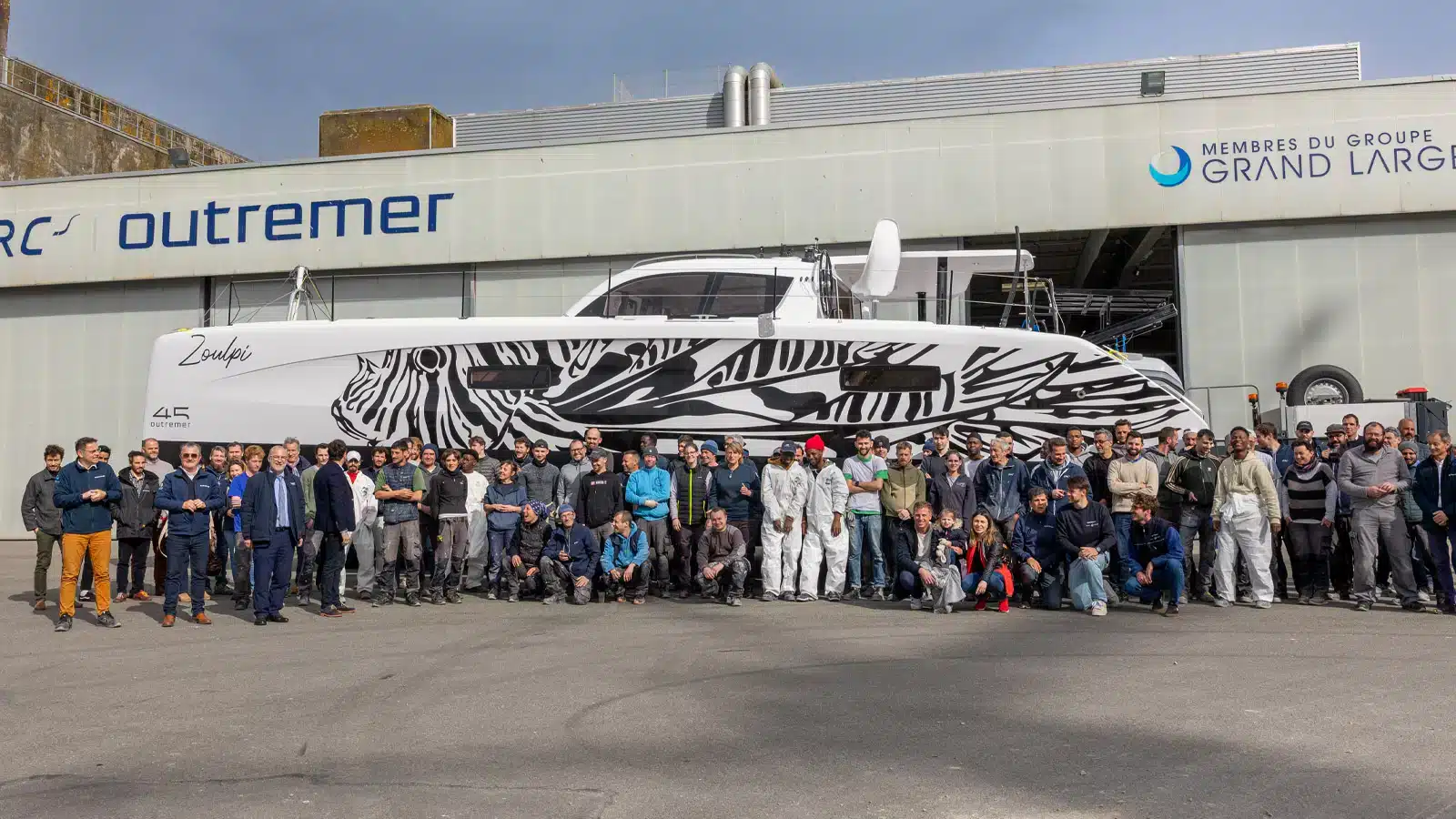
First Outremer 45 launched, the featherweight of catamarans

© 2021 – THE INTERNATIONAL YACHTING MEDIA Designed by BLive Communication
ABOUT YACHTINGNEWS.COM
Yachting News is an interactive multimedia magazine dedicated to the world of boating.
The International Yachting Media is the worlds most widely read boating magazines network. Whit its portal It broadcast its original contents in five languages and in more than 200 countries developing 950,000 views a week. Our web portals are the main source of information for yacht and boat owners, the place where they can find anything about their boating passion.
THEINTERNATIONALYACHTINGMEDIA.COM | SUPERYACHTS.NEWS | YACHT DIGEST
VIRTUAL BOAT SHOW | TUTTTOBARCHE | TOUSLESBATEAUX | TODOSLOSBARCOS
BOATING NEWS FREE APP

To provide the best experiences, we and our partners use technologies like cookies to store and/or access device information. Consenting to these technologies will allow us and our partners to process personal data such as browsing behavior or unique IDs on this site and show (non-) personalized ads. Not consenting or withdrawing consent, may adversely affect certain features and functions.
Click below to consent to the above or make granular choices. Your choices will be applied to this site only. You can change your settings at any time, including withdrawing your consent, by using the toggles on the Cookie Policy, or by clicking on the manage consent button at the bottom of the screen.
Subscribe For Latest Updates
Sign up to receive the best of Yachting News, sea trials, boat review and world premieres .
The only ADVERTISING FREE newsletter

- Featured Listings
- Beneteau Sailboats
- Excess Catamarans
- Powerboat Listings
- Sailboat Listings
- Catamaran Listings
- Recent Price Drop
- See All Team Members
- Why Hire Team Murray Yacht Sales
- Your Saved Searches
- Ask a Question
Beneteau First 36 Reviews, Video & Specs
First 36 reviews.
First Impressions of Beneteau’s First 36 – “One of the most exciting premiers”
By Jochen Rieker of Yacht.De – Link
“The boat remains far from the veneer worlds of more conventional yachts in the segment; you can see the First 36’s efforts to reduce weight. For example, many bolts and nuts on deck fittings deliberately remain visible. But if you come from a First 27, for example, where the fuselage laminate is only lightly sanded and minimally filled, you will experience a completely different level of quality.”
“And how does she sail now? “Amazing” is probably the best!
When we look for wind on the first day and actually find a kind of private squall of 4 to 6 knots in front of Piran, which is hardly noticeable on the water, there is suddenly a soft gurgling and gurgling at the stern. The log jumps to 3, then almost 4, finally to 4.8 knots. It all happens almost automatically, and it feels almost spherical to pull off practically nowhere with this big, wide boat, only under mains and Code Zero. You can leave the incredibly responsive oars to themselves. The First 36 makes its own bubble trail through the Adriatic Sea.
And not much different, only much faster, is the progress on the second test day. A light Bora sends 8 to 12 knots of wind across the Gulf of Trieste. Again, not a serious test for an 11-foot yacht, but an opportunity to try out the entire wardrobe, all the courses. Upwind, the First 36 logs an average of 6.3 knots at tack angles of less than 90 degrees, peaking at up to 7 knots to windward.
Outward sheets under gennaker she starts to hum slightly at 8 knots, a sign that she is already overcoming her hull speed. From around 8.5 knots, the wake turbulence breaks away at the stern and the boat begins to glide. 9.5 knots is the end. It is as true to track as the day before and extremely stiff. Their stability reserves are sufficient to carry up to 5 Beaufort full gear.
Our French jury colleague from Europe’s yacht of the year, Loïc Madeline from Voiles & Voiliers, had perfect test conditions ten days after us, with winds of 20 knots and gusts of up to 25 knots and a wave of over a meter. He was impressed by the ease with which the First 36 surfed the seas. With a single reefed main and small fractional gennaker, he permanently sailed beyond the 12 knot mark, at the top he reached more than 15 knots through the water several times.
Read the detailed test of the First 36 with all data and measured values exclusively in YACHT 9/2022, from April 20 at the kiosk, from April 15 at the subscribers. A detailed video, then from the Baltic Sea, will be broadcast by YACHT tv at the end of April. For this we ordered 5 to 6 Beaufort; we don’t go to sea below that. And in May, Beneteau’s performance cruiser has to face all the competition in a big YACHT comparison. So: stay tuned!”
See All New Beneteau Sailboats
See beneteau first 36’s for sale now, first 36 videos.
Beneteau First 36 Sailing Test Review by More Sailing Magazine
Beneteau First 36 Run Thru Review by Yachtsale
Beneteau First 36 Pictures
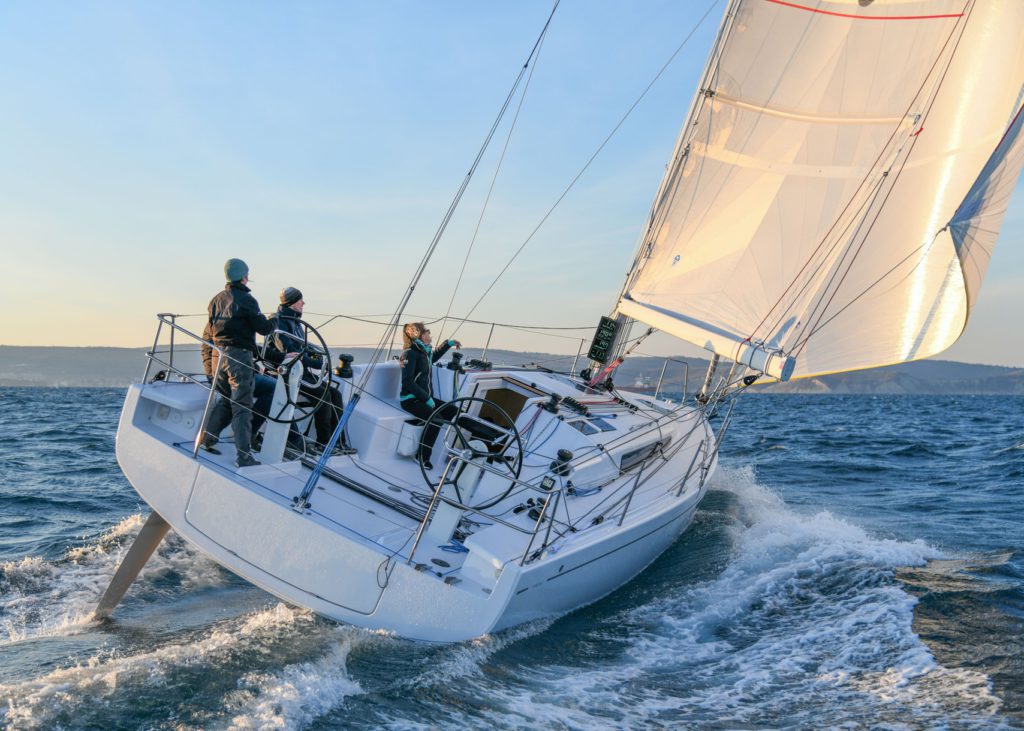
- New Sailboats
- Sailboats 21-30ft
- Sailboats 31-35ft
- Sailboats 36-40ft
- Sailboats Over 40ft
- Sailboats Under 21feet
- used_sailboats
- Apps and Computer Programs
- Communications
- Fishfinders
- Handheld Electronics
- Plotters MFDS Rradar
- Wind, Speed & Depth Instruments
- Anchoring Mooring
- Running Rigging
- Sails Canvas
- Standing Rigging
- Diesel Engines
- Off Grid Energy
- Cleaning Waxing
- DIY Projects
- Repair, Tools & Materials
- Spare Parts
- Tools & Gadgets
- Cabin Comfort
- Ventilation
- Footwear Apparel
- Foul Weather Gear
- Mailport & PS Advisor
- Inside Practical Sailor Blog
- Activate My Web Access
- Reset Password
- Customer Service

- Free Newsletter

Pearson 37 and 37-2 Used Boat Review

DIY Survey Checklist for Used-Boat Buying
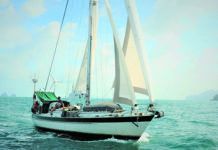

Valiant 40: Reshaping the Cruising Hull

Bristol Channel Cutter 28: Circumnavigator’s Choice

Best Crimpers and Strippers for Fixing Marine Electrical Connectors

Thinking Through a Solar Power Installation

How Does the Gulf Stream Influence our Weather?

Can You Run a Marine Air-Conditioner on Battery Power?

Practical Sailor Classic: The Load on Your Rode

Anchor Rodes for Smaller Sailboats

Ground Tackle Inspection Tips

Shoe Goo II Excels for Quick Sail Repairs
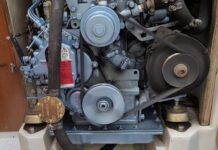
Spring Season Engine Start-Up for Winterized Engines

Solutions for a Stinky Holding Tank

Diesel Performance Additives

Hidden Maintenance Problems: Part 3 – Gremlins in the Electrics

Seepage or Flooding? How To Keep Water Out of the Boat

Alcohol Stoves— Swan Song or Rebirth?

Living Aboard with an Alcohol Stove

Choosing the Right Fuel for Your Alcohol Stove

Preparing Yourself for Solo Sailing

How to Select Crew for a Passage or Delivery

Preparing A Boat to Sail Solo

Re-sealing the Seams on Waterproof Fabrics

Chafe Protection for Dock Lines

Waxing and Polishing Your Boat

Reducing Engine Room Noise

Tricks and Tips to Forming Do-it-yourself Rigging Terminals

Marine Toilet Maintenance Tips
- Sailboat Reviews
Beneteau First 36.7
This dual-purpose boat, designed by bruce farr, is more user-friendly than its high-performance progenitors, but will still sail fast as a one-design or in handicap fleets..
From her office in France, Madame Annette Beneteau Roux, granddaughter of her company’s founder, Benjamin Beneteau, oversees the largest boatbuilding company in the world.
In the US, the Beneteau and Jeanneau brands are madame’s two most popular lines. Under the banner of Beneteau USA, the company markets the Beneteau line, once known as Oceanis models, as distinguished from the First line of performance cruisers. Historically, the Beneteau marque has been stamped on a cruiser with a distinctly European flair. However, recent French-European styling is less pronounced than in boats introduced 10 years ago. They can generally be characterized as having a turn of speed, spacious accommodations, and pricing competitive with American production builders.
First models are sportier, more aggressive designs, and typically exhibit better performance than their more conventional sisters, though they sacrifice little of their appeal for those seeking creature comforts.
Like its competitors, the company has experienced its share of production and blistering problems. However, refinements in raw materials and construction methods are resulting in fewer production glitches.
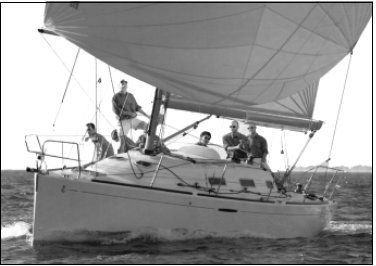
Most Beneteau boats designed for use in the US are constructed in Marion, South Carolina. The 36.7, however, was the first of the First line to emerge from that production facility in several years. Since its unveiling in the fall of 2001, 100 of the 36.7s have been sold in the US.
The first collaboration of the Bruce Farr design office with Beneteau resulted in the 1992 introduction of the First 45s5. More recently, Farr designed the First 40.7, which the company claims is the most successful performance yacht of its size in the last 20 years. It has a stellar record racing under IMS handicapping.
Though they share a similar pedigree, the 36.7 was not designed to meet a racing rule. Still, whether she’s steered with the big stainless steel wheel preferred by the American market, or with a tiller, which seems to be the choice in Europe, the boat ‘s work zone speaks plainly of performance, with a big mainsheet traveler that spans the cockpit, and efficient grinder stations forward of that.
In profile she displays a flat sheer, plumb bow, and reverse transom. These shapes are getting downright common today, thanks, probably, to the influence of European offshore racing boats. The new J/109 is shaped very similarly.
The swept double-spreader rig with large mainsail and comparatively small foretriangle is another trend of recent years, and a welcome change from the IOR-influenced sailplans that held sway in production cruising boat design long after the IOR itself faded.

The underwater hull of the 36.7 is quite slippery, with two nicely shaped keel options-one that gives a draft of a bit over five feet, the other a bit over seven.
Among Bruce Farr’s early creations is Design #51, a 36′ one – tonner known as the 1104. It was so fast that it allegedly caused the IOR to revise design criteria. Although not as flatout as the 1104, the 36.7 can be seen as a direct descendant. Comparing the differences between the two, Jim Schmicker of the Farr office says, “The 1104 was designed primarily for the New Zealand and Australian markets, where proportionately less sail is needed because of windy sailing venues. “The 36.7 has similar sail area to wetted surface ratios, but carries more cloth because it’s 25% heavier.”
The new Beneteau was driven by a “different design requirement that requires a more luxurious interior while at the same time producing a fast boat.”
The 36.7 is also an offshoot of the Beneteau 40.7, although Schmicker says the 36.7 “has a more advanced hull shape and refined look when heeled at high angles.” That heeled shape, combined with what the Farr office calls a “generous rudder area,” simply means that the rudder keeps its bite in the water when the boat is reaching in big winds.
“The changes are more noticeable when the boats are side by side,” says Schmicker. “The 36.7 is straighter in plan at the sheer, with less curvature than the 40.7. It has less volume above the waterline amidships because more volume was placed in the ends. The result is a longer heeled length, producing good handling throughout the heeled range.
“We created the same interior layout in a boat that is nearly three feet shorter. However, there’s less space between the stem and V-berth, and aft berths and transom.
“With the keel design it’s all about laminar flow. This keel on the 36.7 is the result of years of intensive research that produces airfoils designed specifically for the boats that we design. They don’t come from the pages of a NACA foil book. They are the result of 15 years of IOR, IMS, America’s Cup, and Volvo Race research. We provide complete 3D representations to Beneteau so they can produce our designs accurately. The objective is to design the smallest rudder with the maximum lift and low drag that will withstand high loads in heavy winds without stalling. We place the rudder shaft in the blade and set the sweep of the blade tip to give the right amount of helm load for all conditions. We also want robust sections that don’t stall abruptly. And, they must be able to be made in a mass production line that produces the same surface finishes.”
Beneteau USA president Wayne Burdick points out that many yacht designers are surprised “if a boat comes within 1,000 pounds of her designed weight,” because boats tend to put on weight in the production process. However, the weight target is critical to one-design racers, who expect a level field. Schmicker says that the collaboration between the Farr office, Beneteau production managers, and Sparcraft, which builds the mast and boom, yielded a prototype within 100 pounds of targeted weight, and the first boat off the production line was “spot on.”
Deck Layout
Like other aspects of the boat, excepting the massive wheel and location of the traveler, the deck arrangement is typical of many production boats.
Halyard and mainsail controls are led aft to Spinlock ST clutches on the cabintop. Jib and spinnaker sheets are led to Lewmar 48 and Lewmar 40 selftailing winches. The solid vang is supplied by Sparcraft.
Cockpit seats are 19″ wide, 15″ high, and 52″ long, and accented by teak veneer. Though the cockpit arrangement appears conventional, a Farr touch is that it is a convertible: Seats port and starboard with shallow storage compartments below may be removed to make space for sail trimmers, shortening seats 20″.
Length on the centerline between traveler and companionway is 58″, and the width of the footwell is 39″.
With room for the helmsman and a passenger in the stern, she seats seven comfortably in cruise mode, about what we’d expect in a boat this size.
From the perspective of a nonracer or shorthanded sailor, the big wheel is an obstacle in getting to the traveler, and the traveler is an obstacle in getting to the companionway or back to the stern. Singlehanders will need to be nimble, especially when trying to work the sail controls on the cabintop.
An excellent footrest provides a brace for the driver. An additional brace on the cockpit sole would increase crew comfort when heeled. An instrument pod at the companionway provides helmsman and crew with excellent visibility while avoiding the risk of the “knee-through-the – instrument-lens” repair job.
Since the mainsheet is located at the end of the boom, it allows guests to sit in front of the traveler, or move below easily. That layout is a refreshing change, since many builders locate mainsail controls on the cabintop, with mid-boom sheeting. That compromise does prevent interference of the mainsheet with guests, but often at the expense of good sailtrim and efficiency.
Our test boat lives in rainy Washington, where year-round sailing mandates a dodger. Properly fitted, it doesn’t interfere with movement of skipper or crew while underway.
At one end, the bow sports an anchor roller and locker. A foot brace molded into the foredeck, double lifelines, aggressively patterned non-skid, and a teak toerail provide a bowman with a safe working area.
At the other end, the stern seat is removable to ease boarding. A telescoping ladder, shore power, and cockpit shower are standard equipment. A liferaft can be stowed below the helm seat.
There’s little storage in the cockpit, since quarterberths occupy spaces on both sides belowdecks. A small storage area in the starboard quarter provides room for fenders and lines. Most cruisers will sail with a genoa on a furler, and racers underway will keep sails amidships and forward, but still, a boat this size will always have gear that’s best stowed in a cockpit locker or lazarette-bucket, hose, shorepower cable, maybe a grill, and so forth. Much of that will have to live below, and the smaller aft cabin is the likely candidate for “shed.”
The layout of the 36.7 is a smaller version of that on the 40.7. The saloon provides seating for six, and there are bunks for seven, but tall people’s toes will be closer to the ends than they are on some comparable boats.
The appearance is traditional (that is, without the Philippe Starck stylized interior that Beneteau used on many of its boats). The saloon measures almost 10′ on the centerline. There’s 6′ 2″ of headroom, and 8′ of clearance between the settee backs. Settees are 6′ 4″ long and 2′ 1″ wide, and will double as berths if leecloths are installed.
The versatility of design is reflected in the saloon table: When in place it provides a surface for four to six diners; remove it, and its stainless steel support provides a foot brace for crew when underway.
Removal of the table also eases sail packing when in race mode. On our test boat, the brace also provided a space between settee and footrest for a 25-gallon plastic storage bin that holds lifejackets and crew gear. However, if the table is not stored in the garage, odds are it will be atop a bunk.

The L-shaped galley to port is small but adequate, equipped with a twoburner stove and double sink. A counter covers a 24″ deep x 17″ wide reefer located outboard that needs shelves or portable baskets to be organized. Storage is in enclosed cupboards with teak doors, and opening ports provide ventilation.
To starboard, the nav station faces forward and is fitted with wood cabinetry large enough for mounting electronics and fuse panels. The chart table measures 31″ x 23″-large enough for use with a folded chart.
Storage drawers and shelved compartments are below the chart table and navigator’s seat. In a world in which gear expands to fill the space available, the well-organized skipper will find room for necessary gadgetry, but with little space left over.
The master stateroom is furnished with a V-berth measuring 6′ 1″ long and 5′ 3″ wide at the head. The cabin also has a hanging locker and shelves on the hullsides.
Since Americans’ preferences in sleeping quarters differ from their French counterparts, US boats were reconfigured to suit the marketplace. Rather than having equal-sized spaces in the aft staterooms separated by a bulkhead on the centerline, the bulkhead has been moved outboard to starboard. As a result, the bunk to port is nearly queen-sized, while the one to starboard is basically a single quarterberth with some privacy-actually an ideal sea berth.
The head compartment on any three-cabin, 36′ boat will be, at the least, a designer’s challenge. On this boat, a clear choice was made, and the head is Lilliputian. With six feet of headroom, crew can brush teeth while standing, but showers will be taken while seated on the toilet with little space left for swinging arms. On the plus side, small head compartments in which elbows and knees can be wedged against bulkheads are best in a seaway (if any head in a seaway can rate above “dismal”), and this space is shiny fiberglass, vented overhead- so it will be low-maintenance.
Construction
Since Beneteau promotes the 36.7 as a one-design racer, it’s being produced with close scrutiny of the weight and application of raw materials. Boats are constructed to CE Class A requirements for unlimited offshore use.
Mike Thoney of Beneteau says the laminate, laid up behind the gelcoat with glass and vinylester resin, is precut to assure proper dimensions. Beneteau has discontinued use of the Beneteau Underwater System in favor of vinylester resins designed to prevent osmotic blistering. The company is mixing resins to its own formula. Mike Thoney declined to provide details about the mix.
Internal structure is a one-piece grid used in most models that reinforces the hull and distributes mast and keel loads. It also provides a bed for bulkheads and furniture, engine mounts, keel, chain plates and tankage.
Bulkheads become part of the structure when they are bonded to both hull and deck. Chainplates are attached using tie rods molded into the grid system.
The hull-deck joint is an inwardoriented flange onto which the deck is laid and secured with PU 501, a proprietary polyester glue, and mechanical fasteners through-bolted through deck and toerail.
“The deck is laid up with a skin coat, layers of precut fiberglass, and cored with balsa,” Thoney says. “Hardware is all bolted through solid glass and secured with backing plates. Where it goes through coring, the coring is removed and replaced with fiberglass. Backing plates for stanchion bases are bedded in putty to avoid movement. Engine mounts are through-bolted and secured with backing plates and nuts.”
On our test boat, 31 keel bolts and plates designed to disperse loads were easily accessible in a shallow bilge. A robust mast boot prevents water from intruding. In the three rainy months before our inspection, no water had appeared in the bilge. Water and fuel tanks are form-fitted to beds and secured with stainless steel rods. A holding tank is held in place by straps.
Joe Foss, service manager for Beneteau USA, described three post-production problems:
First: “The Edson steering system was designed with a short drag link that inhibited steering, depending upon the angle it met the wheel during the commissioning process. When several boats experienced the problem, the link was lengthened. A repair kit was distributed to the owners of hulls 1-33.”
Second: “A washer at the stemball on one of the shrouds (D-2) was so small it pulled through the spreader bar. Though the problem was encountered only on one boat, hulls 1-43 were examined and found sound.”
Third: One of the boats experienced a broken spreader bar. Since the same spreader is used on the 40.7 and 42.7, and more than 11,000 have been produced with no failures, Foss considers this an anomaly.
Performance
During a test sail near the Olympic Peninsula, we immediately discovered that she’s a responsive yacht. She easily backed out of the marina into a three-knot current with wind on the beam. A 29-horsepower Volvo sail drive provided quick acceleration and produced a short turning radius.
Crewed by a 62-year-old retiree and his small wife, sailhandling proved easy, with an autopilot holding her nose into a stiff breeze. We sailed with 12-13 knots displayed on the wind indicator with full mainsail and 105% genoa. The helm was perfectly balanced, though she felt slightly underpowered.
In 15 knots of wind, we sailed closed hauled at six knots. Footing off to a beam reach, speed held steady at 7.2-8.0 knots, and we steered with two fingers. As we sailed down below a broad reach, speed dropped to 5 knots. In these conditions, a shorthanded crew could hoist an asymmetrical spinnaker and keep the speedo scrambling.
With more than 100 boats sold since its US introduction, the 36.7 is already a success. The base price has increased approximately 10% since its introduction, to $135,000, sailaway, FOB the factory. However, an autopilot adds $2,065; an electronics package with VHF, Raytheon ST60 Tridata, and wind instruments $2,155; and Harken split- drum roller furler $1,695.
For racers, spinnaker gear and an aluminum pole will add $2,505 to the pricetag; a carbon pole adds $1,145.
We suspect that the J/109, mentioned earlier, would be natural competition for this Beneteau, both for one-design fleet racers and performance cruisers. Compare some of the J boat’s specs-LOA 35′ 3″, LWL 30′ 6″, beam 11′ 6″, standard draft 7 ‘, DSPL 10,500 lbs., SA/DSPL 21, DSPL/ L 165-to the Beneteau’s numbers. By those numbers, the J is just a trifle more moderate, and quite a bit higher priced at $165,500 for the base boat. That price differential may have to do with costs associated with the SCRIMP building technique used by JBoats, or with differences in standard hardware and fittings, or maybe with economies of scale-although J/Boats is hardly a low-production builder.
But back to the 36.7. She’s quite nimble. She goes faster and points higher in light air than standard production cruising boats her size. As a racer she’ll be competitive in a onedesign or handicap environment.
Beneteau has laid out restrictive onedesign fleet rules designed to control cost and promote competition among amateurs. There’s an “owner-driver” rule, and boats may not be stripped of standard equipment for racing purposes. Sail inventories are limited to four sails that can only be replaced at 12-24 month intervals.
This enhanced performance, combined with comfortable, functional accommodations and a good price, should attract a broad-based market. She won’t be as comfortable as a fullkeeled cruiser when pounding into big seas, but the adaptable sailplan will allow a shorthanded crew to fly big genoas on a furler easily, or an asymmetrical spinnaker almost as easily as a sprit boat-as long as they’re nimble enough to jump around the wheel and over the traveler.
The lack of cockpit-accessible stowage space is a shortcoming, partly balanced by the good sense of the aft cabin arrangement below. The size of the head compartment really is a matter of preference, and on a race boat or offshore boat, small is fine. Belowdecks, owners will more likely curl up with a book than a television remote, and that, too, is fine.
RELATED ARTICLES MORE FROM AUTHOR
Wow, I raced a Yankee 30 out of Olympia WA for 3 years as crew. I was 19 at the time and had to drive 3 hours from the NAS on Whidbey Island to the boat for each regatta. This was my 1st sailboat to sail on as a beginner. You have a nice boat.
I am looking to buy the Beneteau 36.7 to replace my Elite 37 (made in France) because I had planned to charter my own boat (I hold a 50 GT certificate) and need a boat made in the US.
How can you tell if the 36.7 was made in SC?
Capt. Charlie D
LEAVE A REPLY Cancel reply
Log in to leave a comment
Latest Videos
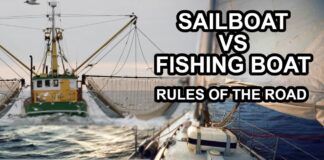
Sailboat vs Fishing Boat – Rules of the Road

Catalina 445: What You Should Know | Boat Review

How to Wax and Polish Your Boat

Beneteau 46.1: What You Should Know | Boat Tour
- Privacy Policy
- Do Not Sell My Personal Information
- Online Account Activation
- Privacy Manager

NEW Beneteau First 36 Just Listed
New yachts for sale, sail monohulls 35ft > 40ft, beneteau boats for sale, beneteau first 36 boats for sale.
Buy with Confidence
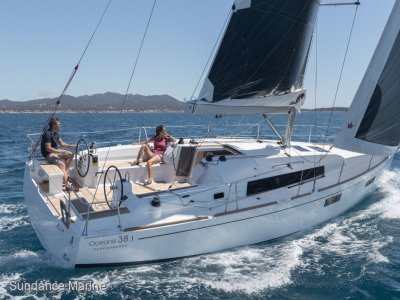
Watch CBS News
Russian military exercises in the Caribbean: Here's what to expect
By Alex Sundby
Updated on: June 12, 2024 / 8:15 PM EDT / CBS News
Three Russian ships and a nuclear-powered submarine arrived in Cuban waters Wednesday ahead of military exercises in the Caribbean. While the exercises aren't considered a threat to the U.S., American ships were deployed to shadow the Russians, U.S. officials told CBS News.
The Russian warships were seen arriving in Havana's harbor on Wednesday morning and were expected to stay in Cuba until Monday. White House national security adviser Jake Sullivan told reporters on Air Force One on Wednesday the U.S. was closely monitoring the Russian ships.
"We have seen this kind of thing before and we expect to see this kind of thing again," Sullivan said.
The U.S. intelligence community has assessed that the submarine is nuclear powered but it isn't carrying nuclear weapons, CBS News national security correspondent David Martin reported. White House national security spokesman John Kirby told CBS News senior White House and political correspondent Ed O'Keefe last week that there was no indication nuclear weapons would be "at play" during the vessels' time in the Caribbean.
What Russian ships are in Cuba?
According to the Cuban Foreign Ministry, the three Russian ships are a frigate, a fleet oil tanker and a salvage tug. The three ships and the submarine headed across the Atlantic separately, Martin reported.

Russia has used the frigate, the Admiral Gorshkov, to test its Zircon hypersonic cruise missiles , according to the Reuters news agency.
Two American destroyers and two ships that tow sonar equipment behind them were shadowing the submarine, Martin reported. Another destroyer and a U.S. Coast Guard cutter were shadowing the three Russian ships. The U.S. Navy also used little sailboats fitted with cameras, known as sail drones, to shadow the Russian ships as they got close to Cuba.
The Admiral Gorshkov and the submarine carried out drills in the Atlantic that simulated a missile strike on enemy ships, the Russian Defense Ministry said Tuesday, according to the Associated Press.

While the Russian ships are in Cuba, the U.S. Navy ships shadowing them are expected to wait for the Russians and continue shadowing them when they leave port, Martin reported.
The ships' arrival in Havana — which the Cuban Foreign Ministry said was expected to include the fanfare of one Russian ship firing 21 salvos in a salute to Cuba — comes ahead of Russia carrying out air and naval exercises in the Caribbean in the coming weeks, Martin reported.
The exercises, which will include long-range bombers, will be the first simultaneous air and naval maneuvers Russia has carried out in the Caribbean since 2019, Martin reported. The exercises will be conducted over the summer, culminating in a worldwide naval exercise in the fall.
"Clearly this is them signaling their displeasure about what we're doing for Ukraine ," Kirby told O'Keefe. "So we're going to watch it, we're going to monitor it, it's not unexpected. … But we don't anticipate, we don't expect that there'll be any imminent threat or any threat at all, quite frankly, to American national security in the region, in the Caribbean region, or anywhere else."
The Russian ships are expected to head to Venezuela after Cuba, but it's unclear what the submarine will do, Martin reported.

What was the Cuban missile crisis?
The events in the Caribbean are different from the Cuban missile crisis that happened over 60 years ago. The 1962 crisis unfolded after the U.S. discovered launch sites in Cuba for Soviet ballistic nuclear missiles.
Over the course of 13 days, the crisis brought the Soviet Union and the U.S. dangerously close to nuclear war. A potential conflict was averted when the Kennedy administration reached a deal with the Kremlin for the missiles to be removed from Cuba.
Alex Sundby is a senior editor at CBSNews.com. In addition to editing content, Alex also covers breaking news, writing about crime and severe weather as well as everything from multistate lottery jackpots to the July Fourth hot dog eating contest.
More from CBS News

Vladimir Putin to visit Kim Jong Un in North Korea

Man allegedly buys books of Chinese military secrets for under $1

Eight Israeli soldiers killed in southern Gaza, military says

Israeli leader dissolves war cabinet after political rival walks out

IMAGES
VIDEO
COMMENTS
The Beneteau First 36 is designed to hit double figures in around 14 knots wind and we noted how it starts planing in the high 8-knot boatspeeds in around 12 knots wind. It also has the stability ...
The new Beneteau First 36 that debuted at Annapolis last fall checks all these boxes, and more. ... My test boat was equipped with the standard rig and rags—an aluminum boom and 9/10ths fractional double-spreader aluminum mast from Z-Spars, plus NPL Tour laminated sails from North. (A carbon-fiber rig from Axxon is optional.)
The new Beneteau First 36 is a new sub-40ft sporty racer/ cruiser from the French yard, which really embraces the 'First' legacy. Product Overview. Product: First look: Beneteau First 36. TAGS: new boat Top Story Yacht review. ... Below she feels every bit the 'First' boats of old. The space is comfortable and light but there is minimal ...
First 36 is the first mainstream racer/cruiser where onboard comfort doesn't affect the experience of high performance sailing. ... First 36 has her first test in Denmark Read the article. News News. news. Limited offer on the First 36 model. 05.04.2024. news. First 36: The genesis of a new creature. The First 36 is no ordinary boat. And its ...
The premiere test sail of Beneteau First 36. The sailing yacht is a great result of synergy between Seascape, the Beneteau branch in Slovenia and top archite...
The First 36 will be built in a new facility in Slovenia. Only 25 boats are scheduled for delivery in the first 12 months of production, but output is expected to ramp up significantly after that.
Beneteau First 36 - Speed made easy. Welcome to the latest model in our new breed of high-performance cruiser-racers. With a weight of 4,8 tons and an upwind sail area of 80 square meters, the new First 36 simply presents a different sailing experience. Actually, we believe this is the first time a mainstream-production boat with full-cruising ...
We have already had the opportunity to extensively test build number 1 of the First 36 - now available as a PDF download. ... Although the boat remains far removed from the veneer wood worlds of more conventional yachts in the segment, the First 36's endeavours to reduce weight are certainly visible. For example, many bolts and nuts of deck ...
Beneteau First 36 follows the design language of the 7th generation of First set by Lorenzo Argento as a subtle and super-efficient boat. Thanks to its wide modern hull, the largest living space in its class will offer comfort comparable to the successful Beneteau First 40.7, with plenty of smart solutions to make living onboard a great experience.
The BENETEAU First 36 was designed to bridge the gap between high-tech development in the world of racing and mainstream racer-cruisers. Even the standard version of First 36 will fully plane in a moderate breeze. However, this by itself was not the main challenge for the design and production teams. For 40 years, the Firsts were successfully hitting the elusive sweet spot between comfort ...
Boats. Boat Test. Beneteau First 36. Beneteau First 36. 2024 April 1. By Bob Pingel. ... This latest series started with the First 53, followed by several very hot sports boats. The First 36 shows what can happen when you combine a targeted, clean sheet-of-paper-design ethos, a globe-spanning dream team, and the resources of a world-renowned ...
First 36 continues to build on the heritage of Beneteau First - achieving a perfect balance between impossible needs. In order to hit the elusive sweet spot between comfort and performance, elegance, and utility, as well as high-tech construction and reasonable cost, the team was joined by an elite international group of designers: Structural ...
Welcome to the latest model in our new breed of high-performance cruiser-racers. With a weight of 4,8 tons and an upwind sail area of 80 square meters, the new First 36 simply presents a different sailing experience. Actually, we believe this is the first time a mainstream-production boat with full-cruising facilities, a mid-market price tag and the full support of a worldwide dealer network ...
The Beneteau First 36 will be world premiered next January during the Dusseldorf Boat Show 2022. Expectations are very high, given the boatyard's quest for the perfect balance between cruising comfort and great racing performance that has been successfully achieved. The First 36 is a promising racer-cruiser that is finally preparing to fill ...
The First 36 received the "European Performance Cruiser of the Year 2023" award. The YACHT test confirmed her suitability as a fast cruising boat with an impressive combination of performance, comfort and design. The sailing characteristics were rated as above average, as she offers an excellent balance between speed and control.
The First 36 makes its own bubble trail through the Adriatic Sea. And not much different, only much faster, is the progress on the second test day. A light Bora sends 8 to 12 knots of wind across the Gulf of Trieste. Again, not a serious test for an 11-foot yacht, but an opportunity to try out the entire wardrobe, all the courses.
Beneteau First 36.7 under sail. Most Beneteau boats designed for use in the US are constructed in Marion, South Carolina. The 36.7, however, was the first of the First line to emerge from that production facility in several years. ... On our test boat, the brace also provided a space between settee and footrest for a 25-gallon plastic storage ...
The big documentary on YACHT tv. Three shots of the sun off Fehmarn ... during the video shoot with the Beneteau First 36, we wanted to find out - and we weren't disappointed. The big documentary on YACHT tv. Webreader. Abo-Shop. Yachts. Alle Themen. Yachts. Superyachts. Small cruiser.
Drei Sonnenschüsse vor Fehmarn... beim Videodreh mit der Beneteau First 36 wollten wir es wissen - und wurden nicht enttäuscht. Die große Doku bei YACHT tv!0...
First 36 by Beneteau (Test YACHT 9/2022) J 112 E (Test YACHT 20/2016) X 4.0 (Test YACHT 18/2019) The tests took place at the beginning of this week from Monday to Wednesday on the Flensburg Fjord, in the best conditions with a moderate easterly or sometimes quite brisk south-west wind. And to anticipate: The conclusion was surprising not only ...
The Beneteau First 36 is produced by the brand Beneteau Yachts since 2022. Beneteau First 36 is a 11.00 meters sport cruiser with 3 guest cabins and a draft of 2.26 meters. The yacht has a fiberglass / grp hull with a CE certification class (A) and can navigate in the open ocean. The base price of a new Beneteau First 36 is €238.8 thousand.
Drei Sonnenschüsse vor Fehmarn ... beim Videodreh mit der Beneteau First 36 wollten wir es wissen - und wurden nicht enttäuscht. Die große Doku bei YACHT tv Da es beim ersten Test in slowenischen Gewässern leider kaum wehte, machten wir uns noch einmal auf, dieses Mal gen Heiligenhafen.
Built to the highest standards by Beneteau, the First 36 promises durability and superior craftsmanship. Its versatile layout and features cater to both racing enthusiasts and cruising families, making it the perfect yacht for a wide range of sailing adventures. Price. AU $650,000 Available to order; base price. Boat Reference.
Three Russian ships and a nuclear-powered submarine are expected to arrive in Cuba this week ahead of military exercises in the Caribbean, officials said. While the exercises aren't considered a ...